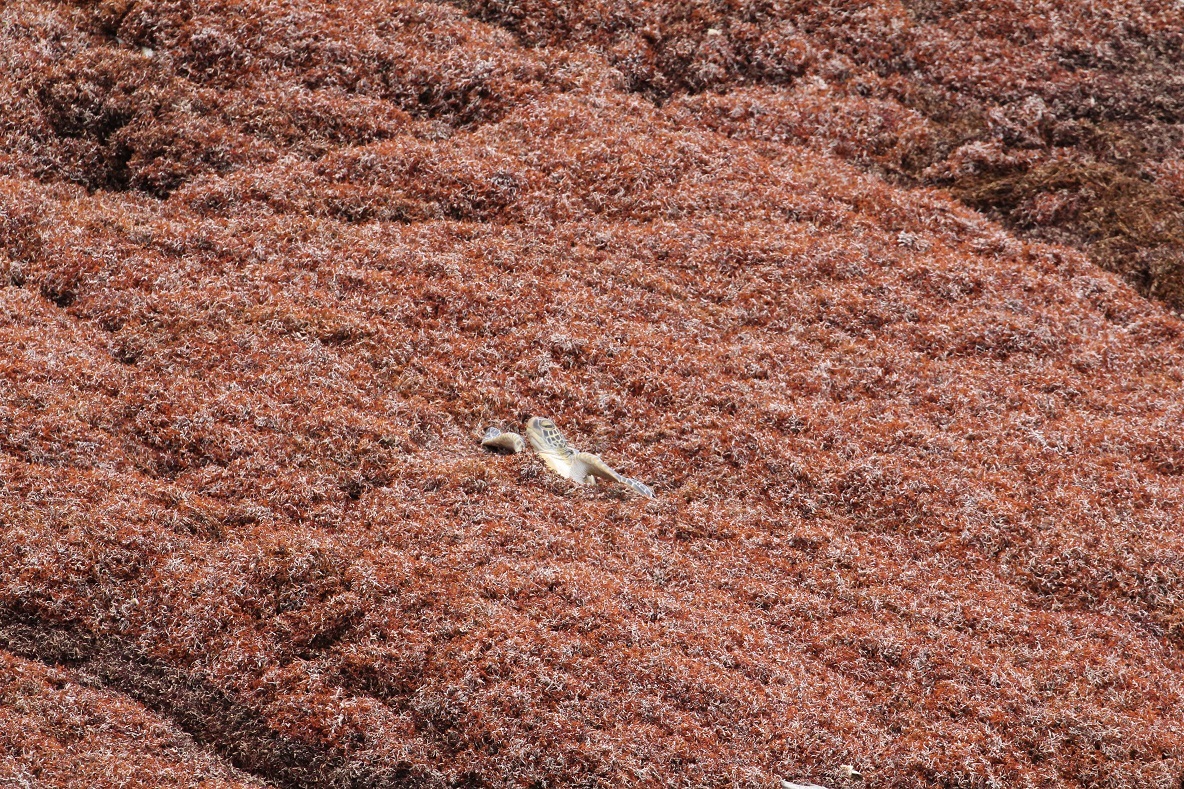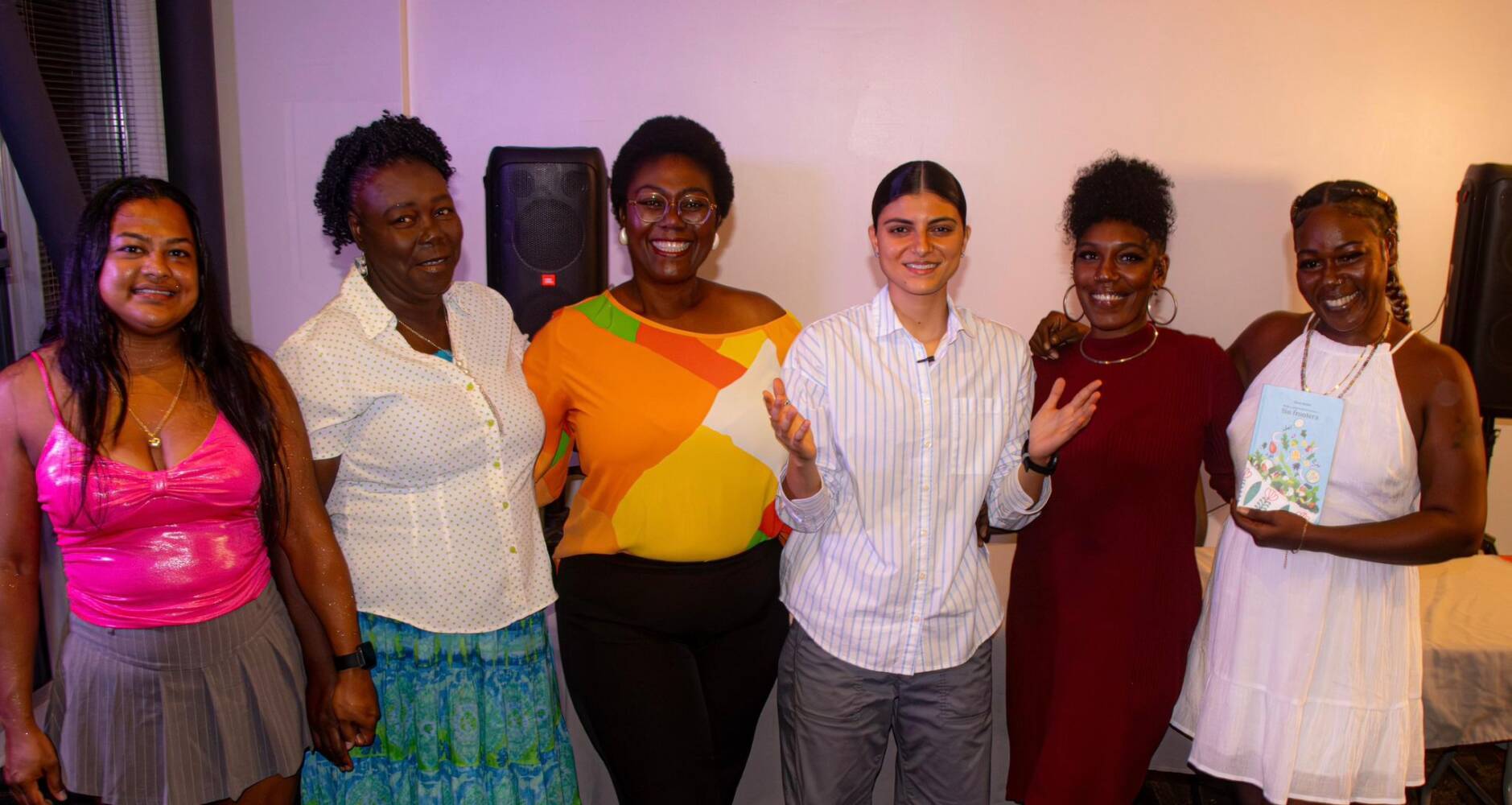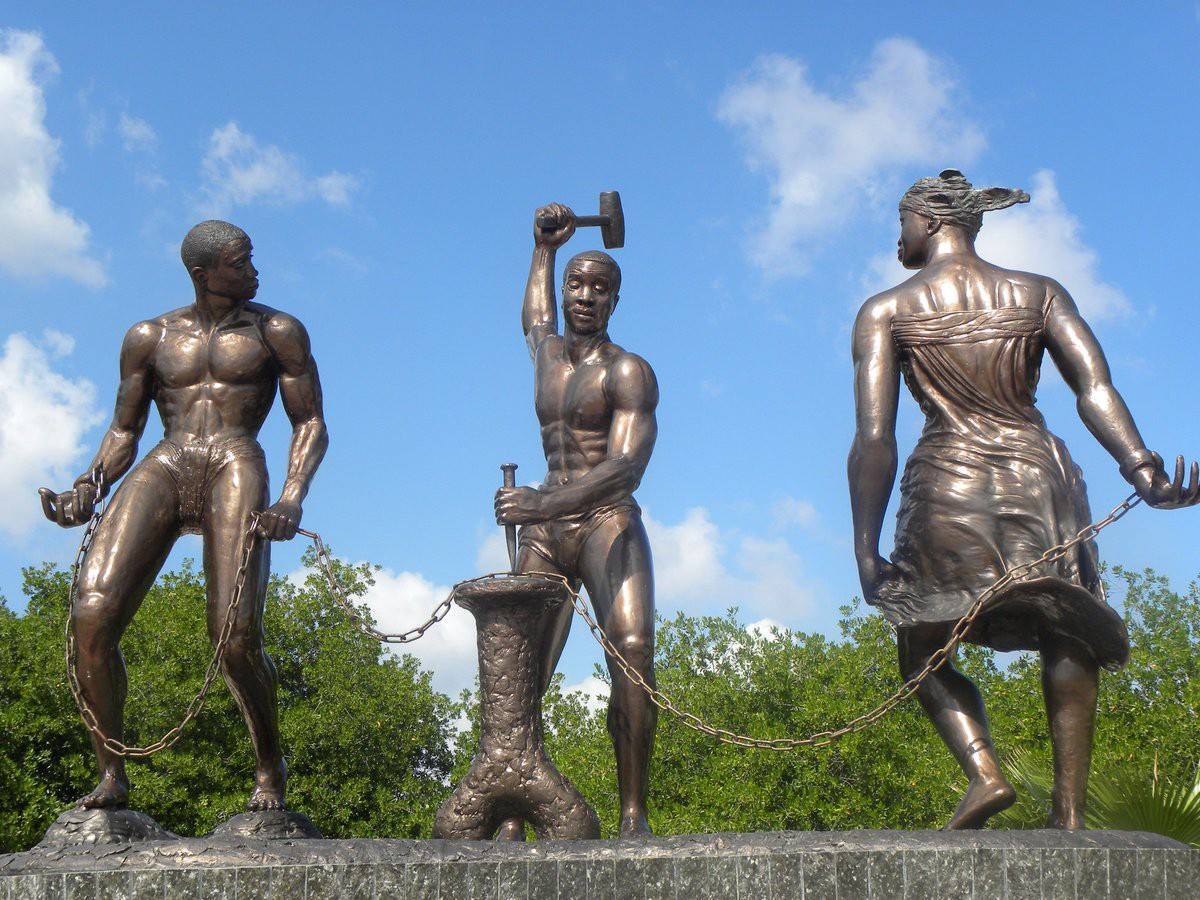The north coast of Curaçao is currently being flooded with sargassum (Sargasso seaweed). The situation is especially bad at Ascension Bay. Within just a few days, the water there turned into a thick, smelly mess. Animals are suffering because of this result of climate change and pollution. “We got the first reports on Friday. By Saturday, we already had a team there,” says Ard Vreugdenhil from Sea Turtle Conservation Curaçao (STCC). “We were on time, not a day too early.”
During the first weekend, volunteers rescued thirteen turtles from the warm sargassum. They were exhausted and dehydrated but still alive. “Luckily, we didn’t find any dead animals then. It wasn’t until Monday that we found two that hadn’t survived,” says Vreugdenhil. “That’s when you realize: this is serious.”


Photos STCC
The rescued animals can’t return to the sea for now. “As long as the bay is still full of algae, they can’t go back. They would just get stuck again. So everything we rescue now, we have to keep and care for. We’re not prepared for that.”
Dangerous Work
“Every day, a team goes to Ascension to rescue turtles. Some search from the rocks, others go into the water,” says Vreugdenhil. “It’s physically hard work and it’s getting more and more dangerous.” The sargassum is starting to rot. This gives off toxic fumes. And the number of stray dogs dropping by is increasing too.”
According to Vreugdenhil, it will soon be too dangerous to work from the back of the bay. That’s why he wants to bring in other organizations, also for his team’s safety. “We’re still in control, but we’re running on fumes. The team is small, and many people have their own jobs or responsibilities.”
Why So Much Sargassum?
According to Vreugdenhil, the problem is a result of climate change and pollution. “It starts off the coast of Africa, where sargassum forms,” he explains. “Because of changes in ocean currents, it drifts toward South America. There, partly due to illegal logging, a lot of nutrients flow into the sea from rivers.

Photo Bernice Brands
This feeds the seaweed. Because of the warming ocean water, it grows extremely fast. It’s actually just like the ‘blauwalg’ bacteria in Dutch summers.” Barbados is affected too. “What arrives there, we get about a week later. That’s why we know more is on the way.”
Help!
Sea Turtle Conservation Curaçao is already getting a lot of help, but the situation remains critical. “We’re looking for trained volunteers. But people shouldn’t just go and do something on their own – that’s dangerous,” warns Vreugdenhil. Donations are also urgently needed. “We need to buy food and pay for vet visits: all that costs money. Every contribution helps.”

Photo STCC
Wanna Help?
You can sign up as a volunteer through Sea Turtle Conservation Curaçao’s social media. Donations can be made via the bank account on their website. “Every contribution, no matter how small, helps,” says Vreugdenhil. “We’re in this together. For the turtles.”








